Not far from where the famous – and to some, infamous – U.S. Army Jungle Operations Training Center once operated, lies the beautiful Caribbean Panama coastline locally referred to as Costa Arriba.
When I first arrived a few years ago, this ecological blend of Caribbean beaches and tropical rainforest was a sleepy, sparsely-populated collection of small towns that hugged the shore along the coast from the busy main port city of Colon to the legendary San Blas Islands
of the Guna Yala. Since then, I have walked the tenuous lines of survival and experience, business and personal development, and the challenges of tactically adapting and overcoming on a daily basis.

The rapidly developing country of Panama called to me as I was working my way out of a reasonably successful career that included investigations and security consulting/services. I knew that my focus was going to be on developing businesses in a very new environment, but I did not consider how much of an asset my prior tactical training and knowledge would be as I dove into the experience with eyes wide open.
The first experience to snap me into the zone was 6 months spent in a farmhouse nestled up in the hills as I began work on my first project, an eco-adventures company called Panama Outdoor Adventures, from which I developed a few important guidelines for myself regarding equipment and preparation: (1) Carry only as little and as much as you need; (2) Travel modularly, be organized; (4) Invest in your life/livelihood with quality gear; and (5) Take care of your gear and your gear will take care of you.
Carry only as little and as much as you need
Luckily for me, I have had the joy of experiencing Panama in a Hyundai Galloper (a barebones but tough mid-size 4×4 SUV) in which I have been able to keep my gear most of the time when I’m on the move. Even then, I never leave my gear in the vehicle for any extended amount of time as folks seem to succumb quite easily to the temptation to break a window in for an opportunistic grab.

As any survivalist – whether in nature or the urban jungle – will attest to, there is a balance between understanding how much or how little you can get away with carrying. Whether it’s counting out magazines for a nighttime patrol, measuring food/water for a cross-country hunt, or spending the day exploring old logging roads on horseback; it is imperative to create a process around analyzing your objective to effectively build your kit. A growing selection of next-generation materials and designs allow for lighter and more efficient equipment like the Leatherman® multi-tools that I carry which include the Skeletool® CX – made with carbon fiber components and travels with me in the tech bag, the MUT® – designed for combat but highly effective at maintaining machinery in the field, and the OHT® – allowing butt-saving one-handed access to the right tool, right now. No matter what your load-out is, you’re going to have to drag this stuff around so it’s just as important to consider how that gear is stashed.
Travel modularly, be organized
Regardless of whether you are running to catch a flight, or running code to catch up with a flight-risk suspect, seconds count when you’re moving with speed and purpose while expecting your gear to keep up with you. As with the equipment itself; a creative variety of bags, packs and cases offer endless configurations for hauling your precious cargo, but the key is to develop an organized system that allows muscle-memory retrieval of what you need when you need it. I do this by breaking things down into three principal bags:
My Tactical Tailor® backpack holds a small dry-bag containing a towel and change of light clothing, a stocked medical kit, mini Pelican case with batteries and other stay-dry incidentals, SteriPen® water treatment kit
, Leatherman MUT® multi-tool, Led Lenser® MT7 flashlight, Led Lenser® H7 headlamp, Gerber® Gator Machete Jr., and a variety of other general use items including toiletries, camera, GPS, etc. depending on need. Using the external webbing points on the bag, I can also mount other pouches or equipment as well as tether tools via paracord or retractable cables. This bag is effectively my overnight bag and aside from food, it can sustain me for days on end in most scenarios.

Known as a bail-out-bag or grab-bag (and to my friends as my man-purse), my 5.11® PUSH™ Pack carries the essentials in an accessible, compact and comfortable platform. The external webbing makes for easy mounting of my 5.11® Soar Polarized sunglasses case, Fenix TK15 flashlight, and Leatherman® OHT®. The variety of pouches on the outside as well as the compartments inside provide for plenty of room to stash additional quick-access items including radio equipment, a water bottle, gloves, small notebook, Fujifilm XP water/shock/dust/freeze-resistant camera, keys, bug spray, sunblock and other small necessities.

Cleverly disguised as a computer bag, my tech pack carries my laptop, various cables and adaptors, a notebook with sleeves for documents, pens, Leatherman® Skeletool® CX, 5.11® ATAC™ PLx flashlight and a small locking pouch for money, receipts or sensitive documents. Professional and functional, this bag is all about business and goes with me into meetings and the office.

These bags are both redundant and complimentary to each other. Some types of items are duplicated (such as lights and multi-tools) but the packs also allow for scalability with regard to the function of the tools (smaller lights vs. larger lights). I have also configured the bags so that they can all be easily worn and carried at the same time while leaving my hands free. Maintaining organization within the bags is important in allowing me to be able to access any item quickly and accurately, even without looking when out of reach or in the dark.
Invest in your life/livelihood with quality gear

While heroic feats abound and the tactical techniques of operators are now becoming prime-time entertainment in the form of “reality” TV shows and competitions, many would have to agree that the tools that we equip ourselves with do make the difference between success and failure and even life and death. So while our opinions on which tool outperforms the others may differ sometimes, I think most of us that depend on our gear believe that it is worth it to pay for quality. Our budgets may expose us to a range of those quality products, but it is the important mindset of truly valuing the tools that we carry that ensures that we are as equipped as possible for any situation.
Take care of your gear and your gear will take care of you
It can be quite frustrating to be presented with the challenge of opening a rusty multi-tool screwdriver when trying to remove the screws to an electrical panel around the house, but it is quite another thing to do a forced entry on a warrant search and realize that you haven’t checked the batteries on your weapon light for a couple weeks as it flickers out. When I invest in quality equipment, I know that my investment will continue to serve me as long as I maintain it. One of the most impressive experiences in the Caribbean coastal rainforest is the incredible rate at which everything grows, as well as the balance found in the incredible rate at which everything decays. Even treated metals rapidly disintegrate in the tropical mix of moisture, heat and salt. So whether in the desert, the snow or the concrete jungle, respect your gear and keep up on cleaning, lubing, securing, organizing, recharging and reloading. It will count when it counts.



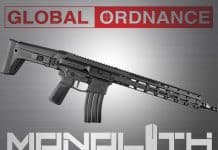
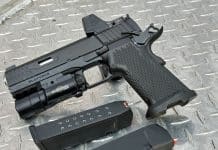
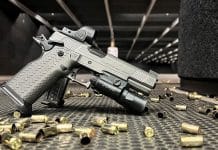

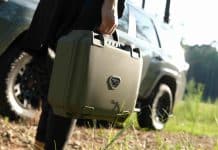
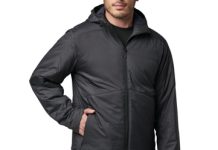
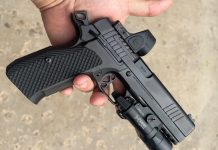
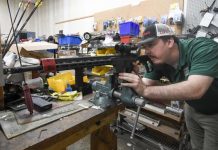
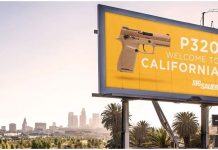
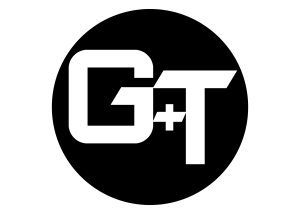
[…] This article was originally posted on GunsandTactics.com. […]
It seems really hard to choose the right tactical gear for me. Recently I have tried to choose a tactical flashlight. Many companies produce various LED tactical flashlights and sometimes we think what light is better or even the best. A month ago I purchased Armytek Predator 670 lumens and happy that this light met all my needs. The price is not high, about $110. It’s good for this well made and multifunctional light. Variety of modes attracts me because I can choose any mode I need.
P.S. Free worldwide shipping
Comments are closed.